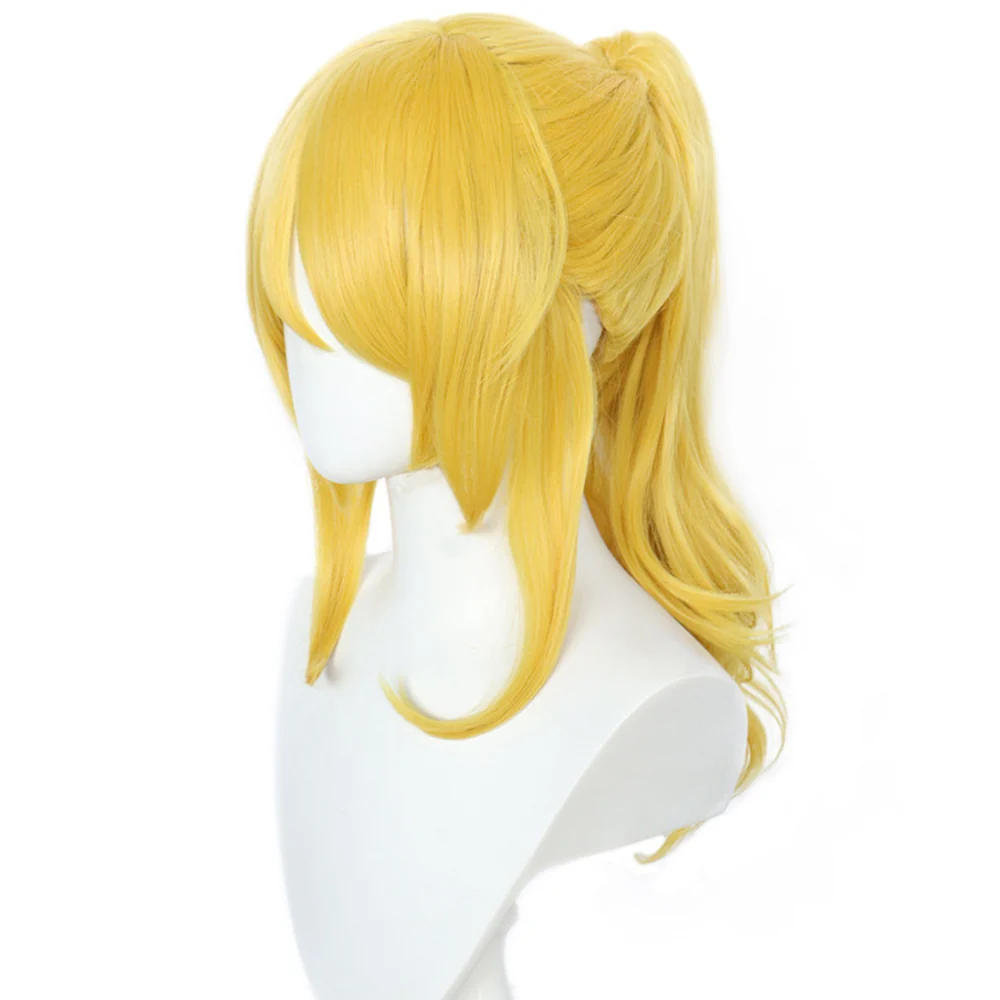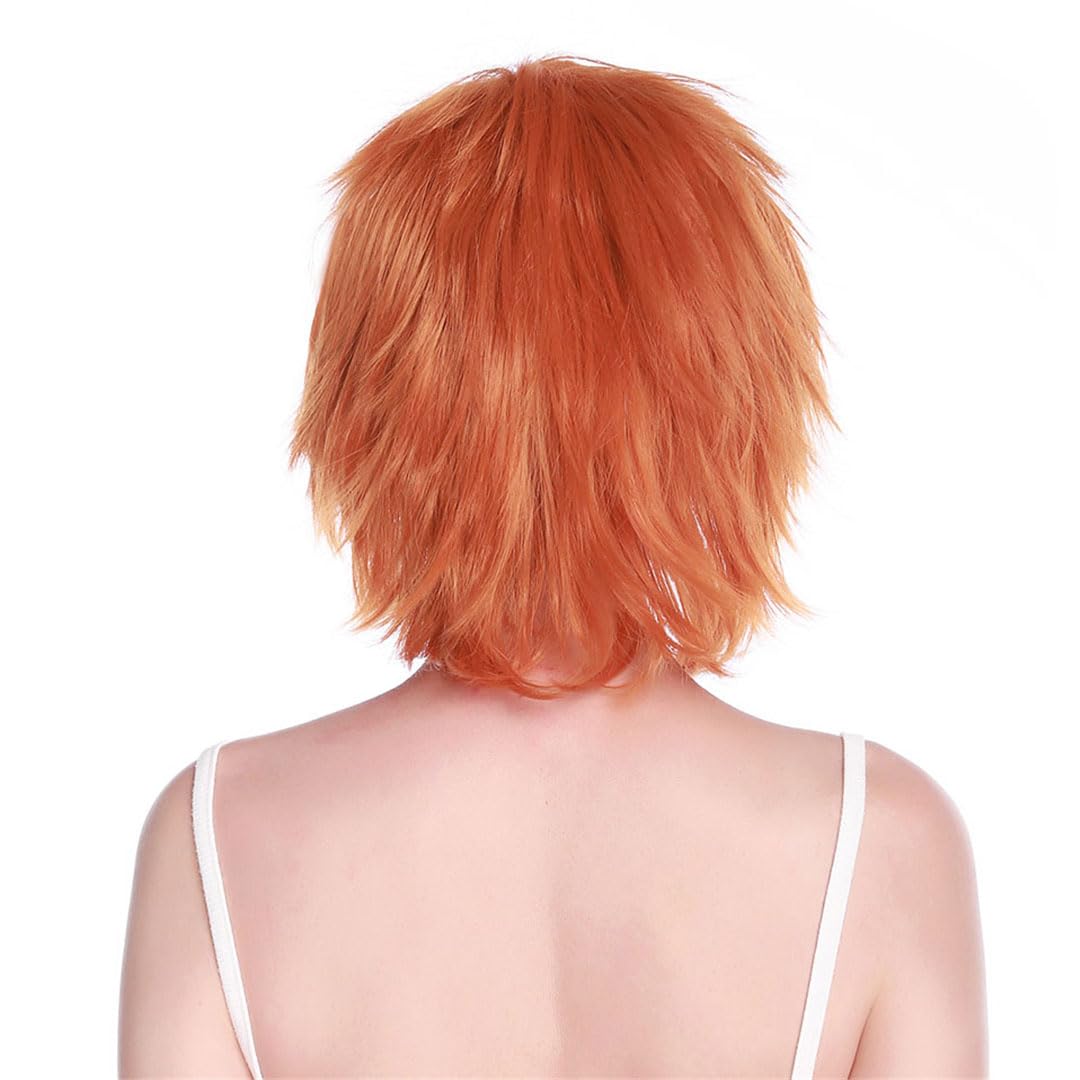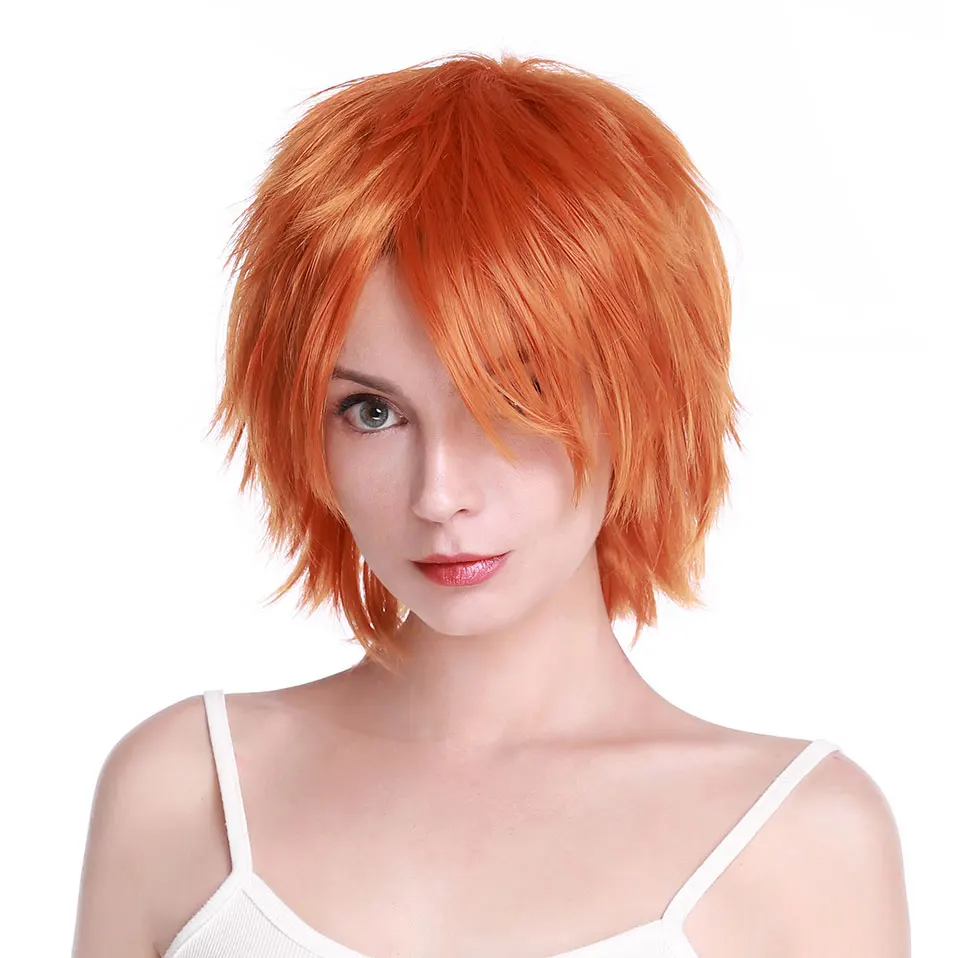
Cosplay Wig: Transforming Your Look
The Essential Role of Wigs in Cosplay
Cosplay wigs play a crucial role in bringing fictional characters to life. These specially designed hairpieces allow cosplayers to accurately recreate the hairstyles of their favorite characters from anime, manga, video games, and other media. Wigs provide the flexibility to switch between different characters without permanently altering one’s natural hair. They come in a wide array of colors, lengths, and styles, ranging from natural-looking to fantastical. High-quality cosplay wigs are typically made from synthetic fibers that can withstand styling and reshaping.
These wigs often feature adjustable caps and built-in combs for secure fitting. The importance of a well-chosen and properly styled wig cannot be overstated in cosplay. It can make or break the overall authenticity of a costume. Many cosplayers consider wig selection and styling as an art form in itself, dedicating significant time and effort to achieve the perfect look. Furthermore, wigs allow cosplayers to experiment with diverse looks that might be impractical or impossible with their natural hair. As a result, cosplay wigs have become an indispensable tool in the cosplayer’s arsenal, enabling endless possibilities for character portrayal and creative expression.

Choosing the Right Cosplay Wig
Selecting the perfect cosplay wig requires careful consideration of several factors. First and foremost, accuracy to the character is paramount. This involves matching the color, length, and style as closely as possible to the original design. Cosplayers should research their chosen character thoroughly, referencing multiple images to understand the nuances of the hairstyle. The quality of the wig is another crucial aspect. Higher quality wigs typically offer more natural-looking fibers, better color consistency, and improved durability. The wig’s fiber type also matters; heat-resistant synthetic fibers allow for styling with heat tools, while standard synthetic fibers are more limited in styling options.
The wig’s cap construction is important for comfort and fit. Wefted caps are common and affordable, while lace front wigs provide a more natural-looking hairline but tend to be pricier. Consider the size of the wig cap as well, as a proper fit ensures the wig stays in place during wear. Additionally, think about the character’s movement and the cosplay environment. For active characters or outdoor events, a securely fitted wig is essential. Lastly, consider your budget and the frequency of use. Investing in a higher quality wig may be worthwhile for frequently cosplayed characters or competition-level costumes.
Preparing and Styling Cosplay Wigs
Proper preparation and styling are key to achieving a polished cosplay look. Begin by gently removing the wig from its packaging and giving it a shake to loosen the fibers. If the wig is tangled, use a wide-toothed comb or wig brush to carefully detangle it, starting from the ends and working up to the roots. For styling, use a wig head or styrofoam head to hold the wig in place. Secure the wig with T-pins for stability during styling.
For non-heat resistant wigs, alternative styling methods include using hot water, fabric softener, or steam for shaping. Hairspray and wig-specific styling products can help set and maintain the desired style. For spiky or gravity-defying hairstyles, a combination of backcombing, hairspray, and wire supports may be necessary. Cutting and trimming the wig should be done carefully and sparingly, as synthetic fibers don’t grow back. When creating complex styles, it’s often helpful to break down the process into smaller, manageable steps. Remember that patience is key in wig styling, and it may take several attempts to achieve the desired look.

Maintaining and Caring for Cosplay Wigs
Proper maintenance extends the life of cosplay wigs and keeps them looking their best. After each use, gently remove any tangles with a wide-toothed comb or wig brush. For synthetic wigs, washing should be done sparingly, typically only when the wig becomes visibly dirty or develops an odor. Use cool water and a mild shampoo specifically designed for synthetic wigs. Avoid rubbing or twisting the wig during washing, as this can damage the fibers.
Instead, gently swish the wig in the soapy water and rinse thoroughly. After washing, pat the wig dry with a towel and allow it to air dry on a wig stand. Never use heat to dry a wig, as this can melt or damage the fibers. Between washes, a wig can be refreshed using a light mist of water mixed with fabric softener. Store wigs on wig stands or in their original packaging to maintain their shape. Keep them away from direct sunlight and heat sources, which can cause fading and damage. For long-term storage, consider using breathable wig bags to protect from dust and tangling. Regular maintenance not only preserves the appearance of the wig but also ensures it remains comfortable and secure during wear.
Advanced Techniques for Customizing Cosplay Wigs
Customizing cosplay wigs allows for greater accuracy and personalization in character portrayals. One advanced technique is wig blending, where multiple wigs are combined to achieve a specific color or style. This often involves cutting wefts from one wig and sewing them into another. Another method is fiber painting, using acrylic paints mixed with fabric medium to alter or add highlights to a wig’s color. For creating unique textures, techniques like heat sealing can be employed. This involves using a heat gun to carefully melt and shape synthetic fibers into spikes or other forms.
Ventilating, the process of hand-tying individual hairs into a lace cap, allows for highly customized hairlines and partings. Some cosplayers create entirely custom wigs by purchasing loose fibers and wefting them onto a cap, allowing for complete control over thickness and style. Adding wired elements to a wig can help maintain gravity-defying styles or create movable parts. For characters with unique hair accessories, these can often be integrated directly into the wig using a combination of sewing and adhesives. While these techniques require practice and patience, they open up a world of possibilities for creating truly unique and accurate cosplay wigs.

Troubleshooting Common Cosplay Wig Issues
Even with careful preparation, cosplayers may encounter various wig-related issues. One common problem is wig slippage, which can be addressed by using wig clips, spirit gum, or a wig cap for extra security. Frizzy or staticky wigs can be tamed using a light mist of water mixed with fabric softener or a specialized wig detangler spray. For wigs that have lost their style, gentle restyling with low heat or steam can often restore the original shape. Tangled wigs require patience; use a wide-toothed comb and work in small sections, starting from the ends and moving upwards.
If a wig becomes flattened during storage, hanging it in a steamy bathroom can help revive its volume. Color fading, while not entirely preventable, can be minimized by storing wigs away from direct sunlight and using color-safe products. For wigs that have developed an unpleasant odor, a vinegar rinse followed by a gentle wash can help neutralize smells. Loose wig caps can sometimes be tightened by adjusting the straps or adding elastic. In cases of minor damage, such as small bald spots, strategic styling or the addition of extra wefts can often conceal the issue. By addressing these common problems promptly and appropriately, cosplayers can ensure their wigs remain in top condition for multiple uses.
Incorporating Wigs into Full Cosplay Looks
Integrating a wig seamlessly into a complete cosplay outfit requires attention to detail and a holistic approach. The wig should complement the costume and makeup, creating a cohesive overall look. Consider the character’s entire aesthetic when styling the wig, ensuring it fits with the era, personality, and design of the character. Pay special attention to the hairline, using makeup to blend the wig with your natural skin tone if necessary.
Coordinate the wig color with any visible body paint or prosthetics to maintain consistency. When wearing a wig cap, match it to your natural hair color or skin tone for a more natural appearance. For costumes with hoods or hats, ensure the wig is secure and styled to accommodate these additional elements. Some cosplayers choose to partially show their natural hair for certain styles, which requires careful blending with the wig. Remember that the wig is part of the character’s overall silhouette; sometimes subtle adjustments in styling can greatly improve the accuracy of the cosplay. Lastly, practice wearing the full costume, including the wig, before any major events to identify and address any comfort or styling issues.
The Impact of High-Quality Wigs on Cosplay Photography
High-quality cosplay wigs can significantly enhance the visual impact of cosplay photography. A well-chosen and properly styled wig can make a character instantly recognizable, even in a single photograph. The texture and shine of a good wig catch light beautifully, adding depth and dimension to photos. This is particularly important for characters with unique or vibrant hair colors, as these often become focal points in images. Photographers often appreciate the consistency that wigs provide, allowing for multiple shoots or long sessions without the worry of natural hair falling out of style.
For photo shoots involving action poses or outdoor settings, a secure and well-styled wig maintains the character’s look throughout. High-quality wigs also tend to require less editing in post-production, saving time and maintaining a more natural appearance. Some cosplayers and photographers collaborate on specific styling techniques to achieve dramatic effects, such as wind-blown looks or dynamic movement in the hair. The versatility of wigs allows for quick changes between characters or variations of the same character, expanding the range of photos possible in a single session. Ultimately, a great wig can elevate a good cosplay to an exceptional one, creating memorable and striking images that truly bring characters to life.

The Evolution of Cosplay Wig Technology and Trends
The world of cosplay wigs has seen significant advancements in recent years, driven by increasing demand and technological improvements. Modern synthetic fibers now more closely mimic the look and feel of human hair, offering improved texture and movement. Heat-resistant fibers have become more common, allowing for greater styling versatility. Lace front wigs, once a rarity in cosplay, are now more accessible, providing ultra-realistic hairlines. Multi-tone wigs that incorporate subtle color variations have gained popularity, offering more depth and dimension.
The rise of wig fiber options, such as silky, yaki, or matte finishes, allows cosplayers to more accurately recreate various hair textures. Innovations in wig cap construction have improved comfort and fit, with features like adjustable straps and breathable materials becoming standard. Pre-styled wigs have also emerged, catering to cosplayers who may not have advanced styling skills. The trend of recycling and upcycling wigs has grown, with cosplayers finding creative ways to repurpose old wigs for new characters. As the cosplay community continues to grow and evolve, wig manufacturers are responding with more diverse options in terms of colors, styles, and sizes, making it easier for cosplayers to find the perfect match for their characters.
The Future of Cosplay Wigs: Innovations and Predictions
The future of cosplay wigs looks bright, with several exciting innovations on the horizon. Smart wigs, incorporating LED lights or color-changing fibers, may become more prevalent, allowing for dynamic and interactive cosplay experiences. 3D printing technology could revolutionize wig making, enabling the creation of highly customized and intricate hairstyles.
The development of more eco-friendly and sustainable wig materials is likely, addressing growing environmental concerns. Virtual reality and augmented reality technologies may integrate with physical wigs, adding digital elements to enhance character portrayal. Improvements in heat-resistant fibers could lead to wigs that can withstand higher temperatures, allowing for more extreme styling options. The trend towards inclusivity may result in a wider range of wig options for diverse hair textures and styles.
As cosplay continues to gain mainstream recognition, collaborations between wig manufacturers and official character licenses could produce highly accurate, mass-produced character wigs. The growing intersection of cosplay and fashion may inspire more wearable, everyday styles inspired by fictional characters. Whatever the future holds, it’s clear that cosplay wigs will continue to play a crucial role in bringing beloved characters to life, pushing the boundaries of creativity and self-expression in the cosplay community.

